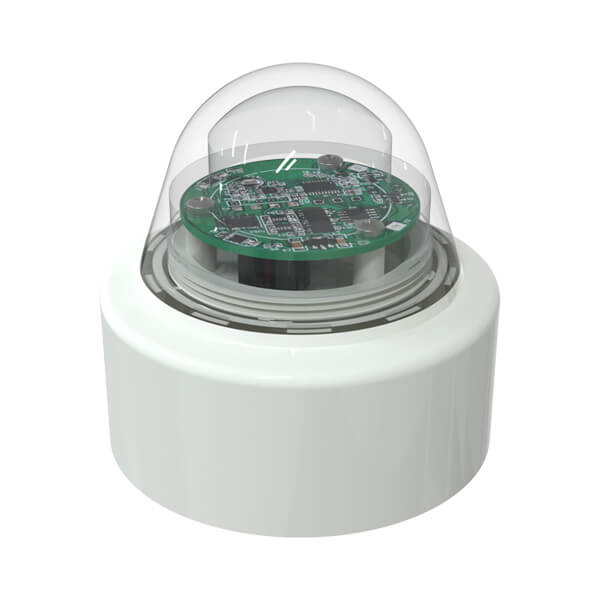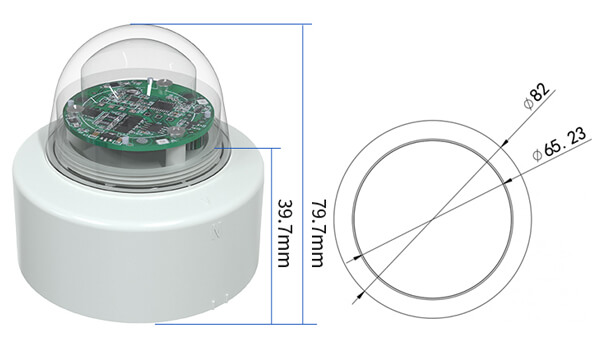Description
| For Downloads | Data Sheet – User Manual – Other Documents – Certificates | |
| Setup Software | Testing Software | |
| For Purchase | Call / WhatsApp / Telegram: +91 8148834200 | |
| For Technical Support | Call / WhatsApp / Telegram: +91 8148834211 | |
Optical Rain Gauge
The Renke optical rain gauge series is a reliable and cost-effective choice for precipitation measurement.The optical rain gauge is roughly the size of a tennis ball, with its internal sensor completely sealed from the external environment. The delivery includes mounting brackets for easy installation on weather stations, street lights, and other infrastructure.
Our optical rain sensor has RS485 signal output and pulse-type signal output.The RS485 output optical rain sensor can combine with a small ultrasonic anemometer to form an ultrasonic weather station.
Working principle
When raindrops pass through the sampling space, the raindrops will block the laser, and the light signal received by the receiving sensor and the electrical signal (such as voltage or current) converted from the light signal will change. When the raindrop passes through the sampling space, it will receive the electrical signal from the sensor. Restore the previous state. When the raindrops traverse the sampling space, the electrical signals of the receiving sensor are processed, and the time for the raindrops to traverse the sampling space can be obtained.
Optical rain gauge parameters
Sense of rain diameter: 6CM
Power supply voltage: 9~30V DC
Power consumption: <0.24W (12V DC, current less than 20mA)
Resolution: 0.1mm
Accuracy: ±5%
Maximum instantaneous rainfall: 24mm/min
Output mode: RS485 or Pulse
Working environment: -40~60℃, 0~99% (non-condensing)
Working pressure range: standard atmospheric pressure ±10%
Optical rain gauge advantages
Compared with the tipping bucket rain gauge: the optical rain gauge is small in size, simple to install, and easy to maintain. The optical rain gauge uses electronic optics and a series of microelectronic filtering, amplification, and detection technologies. This principle has the advantage of sensitivity. During installation, because the optical rain gauge is non-mechanical and non-contact measurement, there is no horizontal installation requirement, so the installation is simple and the subsequent maintenance is also convenient.The shell has smooth lines and an easy-to-maintain design. It resists blockage by fallen leaves effectively.
Optical rain gauge maintenance
- Before installing the optical rain sensor, it must be ensured that the surface of the cover is dry. Any water droplets will cause measurement errors. You can choose to use some desiccant in it.
- If the optical rain gauge is kept outdoors for a long time in a harsh environment, it’s important to keep its surface clean. Regularly wipe it with a soft cloth. For long-term use, clean the rain gauge once a month and ensure a thorough cleaning every three months.





